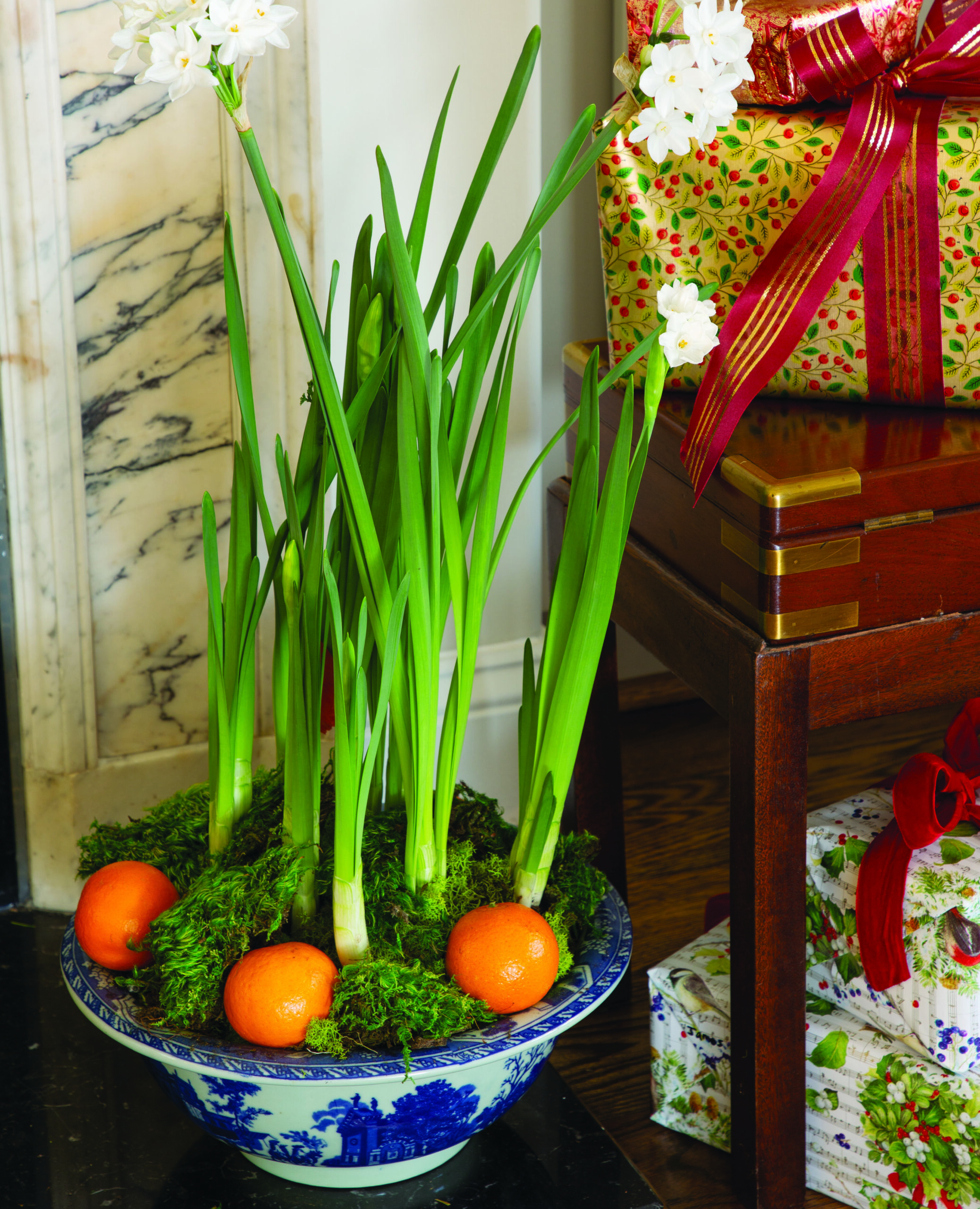
Infuse your holiday décor with sweet-smelling fruits dolled up to bolster Christmas cheer. Decorating with fruit is a time-honored tradition, as it symbolizes prosperity in the coming months. We’ve gathered a few simple handmade accents to elevate your home this festive season—with one quick trip to the grocery store.
Sugared Cranberries
Photography by Stephanie Welbourne Steele and styling by Donna Nichols for Bake from Scratch.
Sugared cranberries add glittering charm to anything they rest upon. Not only do they add festive flair, but they are also straightforward to make and provide fresh acidity to rich desserts. You can also serve these frosted jewels as a garnish for a cheerful cocktail. These beauties are a breeze to make.
Instructions:
Heat ½ cup granulated sugar and ½ cup water in a small saucepan over medium heat, stirring until the sugar dissolves. Let the syrup cool a bit (you don’t want it to be so hot that it bursts the berries) and gently stir 1 cup fresh cranberries into the syrup. Remove the cranberries from the syrup with a slotted spoon and let the excess syrup drip off. Place the cranberries in a single layer on a parchment paper–lined rimmed baking sheet and let them dry for 1 hour. Finally, roll the cranberries in granulated sugar until coated and let them stand until they’re dry, about 1 more hour.
Note: You can repeat these steps with fresh herbs, such as rosemary, to fashion a garnish reminiscent of freshly snowed pines. We recommend dipping the sprigs in the syrup one at a time and gently shaking off the excess before allowing to dry 1 hour.
Pretty Pomanders
Photography by John O’Hagan and styling by Sidney Bragiel.
Citrus fruits can be a wonderful addition to any holiday vignette, especially when accentuated with cloves. Pomanders’ fruity, spicy scent perfumes the scene, and they are especially easy to put together.
Instructions:
Pierce cloves through the skin of an orange in a variety of patterns, whether polka dots, stripes, flowers, or crosses. Clementines provide a petite flourish on a mantel, while navel oranges stacked together in a bowl are a festive centerpiece.
Pomander Topiary
Photography by Kyle Carpenter and styling by Donna Nichols.
Transform pomanders into a showstopping masterpiece by creating this eye-catching topiary. Perched atop a dining room buffet, the arrangement overlooks a convivial Christmas fête. See the full tableau in our November/December 2024 issue.
Supplies:
A variety of smaller pomanders and plain mandarin oranges
18-inch Styrofoam cone or premade topiary form
Hot glue
Sturdy round toothpicks
Fresh greenery
Instructions:
Starting at the bottom of the cone base, carefully insert toothpicks, leaving about half the toothpick exposed. Gently pierce the orange onto the toothpick so the base of the orange sits flush with the bottom of the cone. This ensures your topiary sits level. Gradually work your way around the base of the cone, alternating pomanders and plain oranges, until the first row is complete.
Repeat this same process for the next row and work your way to the top. Once you’ve added all the oranges, fill in the holes with small clippings of greenery using dabs of hot glue. The topiary will last for 2 to 3 days.
For the topper, it’s fun to get creative. You can place an orange on the top of the cone or leave it empty so you can fill in with greenery, depending on the look you want. A festive bow also adds a charming touch.
Tip: When selecting your oranges, we recommend mandarins with a nice round shape. This will give your topiary a prettier presentation and a more uniform look.
Dehydrated Oranges
Photography by Stephanie Welbourne Steele and styling by Melissa Sturdivant Smith for Victoria.
Whether strung together as a garland on the tree or affixed as a final touch on holiday gifts, dehydrated orange slices are synonymous with this time of year.
Instructions:
Desired citrus (Works great with anything from grapefruit and oranges to lemons and limes.)
Preheat oven to 200ºF. Line 1 to 2 baking sheets with parchment paper.
Slice desired citrus very thin, at least ¼ inch. Pat slices dry with a paper towel and place at least ¼ inch apart on prepared baking sheets.
Bake until citrus is completely dry and seems almost brittle to the touch, 3 to 6 hours, depending on the size of the citrus. (Larger citrus will likely take longer than smaller citrus). Flip the citrus every hour and rotate the pans to ensure even drying. Let cool completely on sheet trays. Store in a cool, dry place. Dehydrated properly, dried slices will last about 6 months.